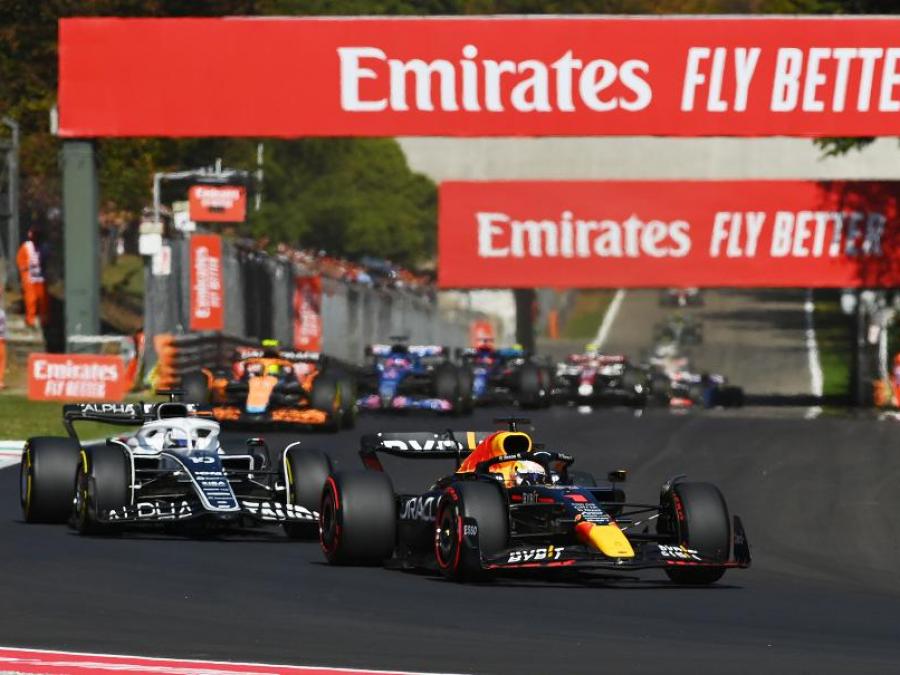
-
Category
-
Author
-
1,818
-
0
-
21Sep, 2022
In the new season, the Formula 1 race schedule will be a record-breaking one.
The record-breaking Formula 1 calendar for 2023 has been published. Traditionally, the season starts in Bahrain and ends in Abu Dhabi, and it lists 24 Grand Prix. New features include the return of racing to China (currently in provisional status) and Qatar, as well as the first race in Las Vegas. There are two built-in stages in the calendar, these are Imola-Monaco-Spain and Austin-Mexico-Sao Paulo. Azerbaijan also remained on the list, which will receive pilots in April.
Other changes in the calendar relate to the dates of the races. So, for example, the Belgian stage in Spa will be held on July 28-30, while Azerbaijan was postponed from early summer to spring. For China, certainty will appear when the situation with the coronavirus in the country becomes clearer. The stage in France was excluded altogether.
The schedule of the first five stages is as follows:
March 3-5 - Bahrain Grand Prix (Sakhir)
March 17-19 - Saudi Arabian Grand Prix (Jeddah)
March 31-April 2 - Australian Grand Prix (Albert Park, Melbourne)
April 14-16 (preliminary) - Chinese Grand Prix (Shanghai)
April 28-30 - Azerbaijan Grand Prix (Baku)
Miami (5-7 May)
Italian Imola (19-21 May)
Monaco (26-28 May)
Barcelona (2-4 June)
Canada (Montreal, 16-18 June)
Austria (30 June-July 2)
Silverstone in the UK (July 7-9)
Hungary (July 21-23)
Belgium (July 28-30).
This will be followed by a four-week break, after which Formula 1 will arrive in the
Netherlands (August 25-27)
September 1-3 - Italian Grand Prix (Monza)
September 15-17 - Singapore Grand Prix (Marina Bay)
September 22-24 - Japanese Grand Prix (Suzuka)
October 6-8 - Qatar Grand Prix (Losail)
October 20-22 US Grand Prix (Austin)
October 27-29 - Mexico City Grand Prix (Rodriguez Brothers Circuit)
November 3-5 - Sao Paulo Grand Prix (Interlagos)
November 16-18 - the Las Vegas Grand Prix
November 24-26 in Abu Dhabi ("Yas Marina", UAE).

-
Category
-
Author
-
2,108
-
0
-
19Sep, 2022
Another accident with a bus again after self-immolation. The incident is from Paris, France. An electric bus caught fire and burned completely in just 2-3 minutes.
The batteries of these buses are located on the roof and self-ignite without physical damage to the battery, not even being charged at the time of ignition.
Luckily there are no passengers on the bus. If there are passengers in the bus, their survival is questionable.
Toxic gases from burning the battery and the bus further contribute against environmentally friendly transport.

-
Category
-
Author
-
1,101
-
0
-
17Sep, 2022
The off-road vehicle earned only one star in testing.
Non-profit organization Latin NCAP, which specializes in testing cars for the South American market, conducted a series of crash tests on two crossovers produced in Brazil. Experts tested the safety of Honda WR-V and Volkswagen Nivus subcompact SUVs. Both cars experienced a frontal impact at a speed of 64 kilometers per hour, side collisions with a cart and a pole. The results were the opposite, and the Honda model failed the crash test.
The Honda WR-V failed miserably. For the protection of adult passengers, the crossover earned 16.41 points, or 41 percent of the maximum result. In a frontal impact, the driver and passenger's legs and chest are poorly protected, and in a side impact, there is a risk of serious chest injury.
For child protection, the car received 19.92 points (40 percent of the maximum result). The car showed good results in protecting pedestrians: 28.23 points (59 percent). During crash tests, experts found that the seat belts do not comply with UN and Latin NCAP rules, and a side impact on a pole was not carried out at all due to the lack of side airbags. As a result, the crossover received only one star out of five possible.
The subcompact Volkswagen Nivus, on the contrary, coped with crash tests perfectly, earning the maximum number of stars. For the protection of adults and children, the crossover received 36.99 (92%) and 44.87 points (92%), since the car is already equipped with six airbags as standard. At the same time, for the protection of pedestrians during a collision, the car received even less points than Honda - 23.4 (49%).
In early September, the updated Toyota Tundra XK70 received the highest safety rating during crash tests. The full-size pickup was tested during collisions and rollovers.















